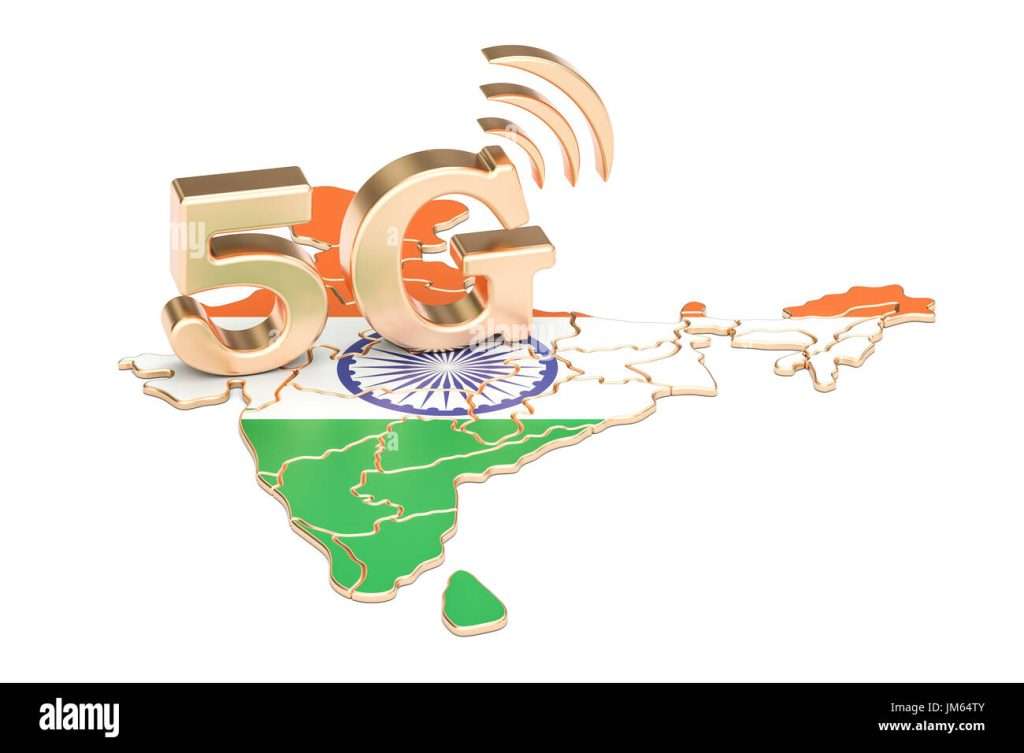Cryptocurrency: A bright future or just a fad ?

Theme: Cryptocurrency has recently become a hot topic in the financial world. The rise of Bitcoin and other digital currencies has caused a stir in the industry, with some experts hailing it as the future of money, while others dismiss it as a fad. So, what is cryptocurrency, and what does the future hold for it? What is Cryptocurrency: Cryptocurrency is a digital or virtual currency that uses cryptography for security. It is a decentralized system, meaning any government or financial institution does not control it. Instead, it is powered by a network of computers around the world. The most famous example of crypto is Bitcoin, which was created in 2009 by an unknown person or group of people using the pseudonym Satoshi Nakamoto. Since then, thousands of other cryptocurrencies have been created, including Ethereum, Litecoin, Dogecoin, etc. Cryptocurrencies can be used to buy goods and services, or they can be traded for traditional currencies like the US dollar or the euro. Crypto Currency Advantages of Cryptocurrency: Decentralization: One of the key advantages of cryptocurrency is that it is decentralized. This means that there is no central authority controlling the currency, such as a government or bank. This makes it less susceptible to government or financial institution interference and corruption Security: These transactions are secured using cryptography, making it very difficult for hackers to steal or manipulate the currency. Anonymity: Cryptocurrency transactions are anonymous, making it difficult for governments or financial institutions to track or regulate them. Accessibility: It is accessible to anyone with an internet connection, regardless of location, nationality, or socioeconomic status. Low Transaction Fees: These transactions typically have lower fees compared to traditional banking transactions. Disadvantages of Cryptocurrency: Volatility: Cryptocurrencies are highly volatile, meaning their value can fluctuate rapidly and unpredictably. This can make them a risky investment. Lack of Regulation: Crypto is not yet widely regulated, which can make it a target for criminal activities such as money laundering or fraud. Complexity: Cryptocurrency is a complex and technical subject, which can make it difficult for the average person to understand and use. Limited Acceptance: It is not yet widely accepted as a form of payment, which can limit its usefulness in everyday life. The Future of Cryptocurrency: So, what does the future hold for cryptocurrency? While it is impossible to predict the future with certainty, several factors suggest cryptocurrency is here to stay. Growing Acceptance: While cryptocurrency is not yet widely accepted, more and more businesses are starting to accept it as a form of payment. This includes major companies like Microsoft, Overstock, and Expedia. Investment Interest: Cryptocurrency has become a popular investment option, with many investors seeing it as a hedge against inflation and a potential store of value. Technological Advancements: It is still a relatively new technology, and there is much room for growth and innovation. For example, the development of blockchain technology could revolutionize the way we conduct transactions and store data. Government Interest: some governments have been skeptical of cryptocurrency, others are starting to show interest in it. For example, El Salvador recently became the first country to make Bitcoin legal tender. Real World examples of Cryptocurrency: Despite the arguments for and against cryptocurrency’s bright future, there are many examples of how it has been used in the real world. Here are just a few: Venezuela: Venezuela is a country that has been plagued by economic instability and hyperinflation. In this context, cryptocurrency has become a popular way for people to store and transfer money. The Venezuelan government has even launched its cryptocurrency exchanges in Petro, as a way to circumvent international sanctions. El Salvador: In 2021, El Salvador became the first country in the world to adopt Bitcoin as a legal tender. The move was seen as a significant endorsement of cryptocurrency and a sign that it’s becoming more widely accepted around the world. Conclusion: To sum it up, the future of cryptocurrency remains uncertain, but it is more than just a fad. The advantages of decentralization, security, anonymity, accessibility, and low transaction fees make it an attractive option for many people. However, the risks of volatility, lack of regulation, complexity, and limited acceptance cannot be ignored. With growing acceptance, investment interest, technological advancements, and government interest, it is evident that cryptocurrency is here to stay. As technology continues to evolve, it has the potential to revolutionize the financial industry and the way we conduct transactions. While the future is unpredictable, the innovation and possibilities that come with cryptocurrency make it an exciting prospect for those willing to take the risk. All About Cryptocurrency: https://www.moneycontrol.com/msite/wazirx-cryptocontrol-articles/Heres-how-you-can-safely-invest-in-Cryptocurrency-in-India/ https://www.forbes.com/advisor/in/investing/cryptocurrency/how-to-buy-cryptocurrency/ https://coinmarketcap.com/new/ Also Read: https://hirednex.com/tech-forecast-predicting-the-future-of-it-industry/ https://hirednex.com/exploring-the-rise-of-digital-currency-in-india-how-it-differs-from-upi/
Online Education: A Critical Look at the Pros and Cons

Theme: The COVID-19 epidemic has significantly increased online education’s usage and popularity, in the current situation. Additionally, according to data from the Online Learning Consortium (OLC), the number of students taking online courses has increased by more than 340% in the last ten years. Since online education is becoming more accessible and accommodating to students’ requirements. Advantages of Online education: It has several advantages over traditional in-person education, some of which include: Flexibility: One of the main benefits of online learning is the amount of flexibility it offers. As long as they have an internet connection, students can access course materials at any time and participate in virtual classes. Students who work or have other commitments that make it challenging to attend in-person classes may particularly benefit from this. Variety of options: Students have a wide choice of alternatives when it comes to online education. There are options for everyone, including traditional degree courses and massive open online courses (MOOCs). Savings: Since there are no travel fees or additional charges for accommodation and board, online education may be more affordable than traditional schooling also application such as youtube provides free online education. Self-paced learning: Online classes allow students to study at their own pace and on their own timetable. For students who learn better on their own or who require more time to do schoolwork, this may be advantageous. Global community access: Students who pursue their education online have the chance to communicate and work with people from all around the world. Students interested in studying abroad or working abroad may find this to be especially helpful. Access to resources: Online education platforms frequently provide students with a variety of resources, including videos, tutorials, and interactive aspects that improve their learning process. Examples: Khan Academy is one example of a platform that provides a wealth of resources for self-paced learning in a wide variety of subjects, from math and science to history and the arts. Coursera is another example of a platform that offers a online education degree by variety of online courses from universities and organizations around the world. Some universities and colleges are also offering online courses and degree programs, such as Arizona State University’s Global Freshman Academy. Overall online education can offer a variety of opportunities and is flexible to adapt to personal situations it can offer more resources and access to global communities, but it also requires more self-motivation and discipline. Disadvantages of online education: Online education provides numerous benefits, but there are some drawbacks as well. Among the most significant drawbacks are: Lack of face-to-face interaction: One of the main drawbacks of online learning is the absence of instructor-student face time. Due to this, it may be more difficult for children to form bonds with their classmates and obtain the assistance they require from their teachers. Limited socialization: Online education can also limit possibilities for socializing and networking, which are crucial parts of the college experience. Technical issues: Since online learning mainly relies on technology, these issues might occasionally arise. These may involve problems with computer performance, program compatibility, and internet connectivity. Distractions: Online classes can be taken from any location, so it might be challenging for students to concentrate on the subject matter. Requires self-discipline: Without the structure and accountability of a typical classroom environment, some students can find it challenging to keep up with their academic tasks.Some Sometimes limited resources: Resources that are exclusively available on campuses, like as libraries, labs, career centers, or other support services, may not be accessible to online students. Examples: Some students who are taking all their classes online may miss out on the traditional campus experience. Some students may find that they’re more susceptible to distractions when taking online classes from home. Some students may feel lonely or disconnected from their peers if they’re not able to interact with them in person. Conclusion: In conclusion, online education has the potential to provide a variety of advantages, including cost savings, convenience, and flexibility. It does have certain disadvantages, though, such as a lack of face-to-face communication and potential technical issues. Ultimately, a student’s or teacher’s needs and preferences will determine whether or not online education is the best option for them. Before making a choice, it is crucial to consider the advantages and disadvantages of online learning and to explore many possibilities to discover the one that best suits your needs. Online education may be a useful tool for learning and developing personally if used properly. More Topics for GD: https://hirednex.com/work-from-home-vs-work-from-office-which-is-better/ https://hirednex.com/4-day-work-week-india/ https://hirednex.com/moonlighting-pros-and-cons-and-is-it-right-for-you/ References: Online education essay/online education k-12/online education high school: https://byjus.com/cbse/short-essay-on-online-classes/ https://www.aplustopper.com/essay-on-online-education/
Work from Home vs Work from Office: The Strong Pros and Cons 2023

Work from Home vs Work from Office Theme: The concept of Work from home is the best way to better balance your professional and personal responsibilities. For example, you can take care of a sick child during the day without needing to take time off from work. Over 60% of Americans are working from home due to the ongoing COVID-19 pandemic, according to a recent survey by the National Bureau of Economic Research. Some employees have reported advantages such as greater work-life balance and cost savings on commuting, while others have experienced isolation and burnout. Advantages of Working from home: Increased flexibility: One of the biggest advantages of working from home is the ability to create a schedule that works best for you. For example, if you are a morning person, you can start your workday earlier and finish earlier in the day. Reduced commute: When working from home, you don’t need to spend time and money commuting to an office, which can be a huge time saver and cost reducer. Improved work-life balance: Working from home allows you to better balance your professional and personal responsibilities. For example, you can take care of a sick child or run errands during the day without needing to take time off from work. Increased productivity: Without the distractions of an office environment, some people find that they can be more focused and productive when working from home. For example, a quiet home office with minimal interruptions can lead to better concentration and quicker task completion. Better health: Remote work allows to have more control over their physical environment, you can have better posture, better lighting, less noise, and other environmental factors, reducing the risk of health issues such as back pain, headaches, and eye strain. Cost savings: Working from home can also save money in the long run. For example, you don’t need to spend money on gas or public transportation to get to the office, and you can save money on things like coffee and lunch. Environmentally Friendly: Remote work reduces the carbon footprint of transportation. According to a study by the environmental consulting firm, Carbon Trust, remote work can reduce carbon emissions by up to 20%. Disadvantages of Working from home: Isolation and lack of social interaction: Without the daily interactions that come with working in an office, some people may feel isolated and lonely. This can also lead to feelings of burnout and reduced job satisfaction. Difficulty separating work and personal life: When working from home, it can be challenging to separate work and personal life, which can lead to longer work hours and a lack of work-life balance. For example, working in a home office may make it difficult to “switch off” from work when the workday is over. Difficulty collaborating and communicating: Remote work can make it more difficult to collaborate and communicate with coworkers, clients, and other stakeholders. For example, it can be harder to have spontaneous conversations or to provide hands-on support when working remotely. Lack of structure and accountability: Without the structure and routine of an office environment, some people may find it harder to stay organized and motivated. For example, working from home can lead to procrastination and lack of focus if an employee doesn’t set a clear schedule. Distractions: It is easy to get distracted from household chores, family members, or other things when working from home. For example, home-schooling children while working can prove to be a big distraction. Unfavourable working conditions: Lack of proper office equipment and workstations can lead to discomfort, pain, and long-term health issues. Security risks: When working from home, it is harder to protect company data and equipment from security risks such as hacking or physical theft. It is also harder to ensure that employees are properly trained and equipped to handle sensitive data when working remotely. Advantages of working from the office: Improved collaboration and communication: Working in an office allows for face-to-face interaction and spontaneous conversations, which can lead to better teamwork and increased productivity. For example, having a quick conversation with a colleague can help to clarify a task or solve a problem more quickly than sending an email. Increased accountability and structure: In an office setting, there is a set schedule and routine that can help employees stay on task and motivated. For example, regular team meetings can help to keep everyone informed and on track. Access to office resources: When working in an office, employees have access to resources such as office equipment, supplies, and technology that can make their work more efficient. For example, having a large monitor can help with better visualization and faster editing of documents. Professional development and growth opportunities: In an office environment, employees have more opportunities for professional development, such as mentoring and training programs. For example, attending company-wide meetings and events can help employees to stay informed about company developments and new industry trends. Sense of community and belonging: being part of an office environment can foster a sense of belonging, camaraderie, and motivation. For example, team-building activities and office events can help build stronger relationships among coworkers. Clarity of roles and hierarchies: An office environment clearly defines roles, responsibilities and hierarchies, leading to better communication, delegation, and decision-making. Improved company culture: An office environment can also help to foster a positive company culture by creating a sense of community among employees and promoting a shared sense of purpose. Disadvantages of Working from Office: Here are a few disadvantages of working in an office, with examples: Commuting: A long or difficult commute can be time-consuming, stressful, and expensive. For example, sitting in traffic for a long time can make an employee arrive at work tired and stressed. Lack of flexibility: In an office setting, employees are typically required to follow a set schedule, which may not work for everyone. For example, a parent with young children may not be able to work traditional office hours. Distractions: An
“Moonlighting: The Strong Pros and Cons in 2023”

Theme: Wipro fired more than 300 employees because of moonlighting. On August 20, 2022, Wipro’s chairman Rishad Premji tweeted against moonlighting and labelled it “cheating- clear and simple.” Moonlighting refers to the act of working at an extra job or performing work for pay in addition to one’s primary job without informing the principal employer. It is also known as having a side hustle or a part-time job in addition to one’s full-time job. For example, A teacher who works as a Content writer on the weekends could be moonlighting. A software engineer who freelances on the side could also be considered to be moonlighting. In both cases, the individuals have a primary job and are also working additional jobs or performing extra work for pay on the side. Why do employees prefer/do Moonlighting: Financial reasons: Many people work more hours to pay off debts, save for a specific purpose, or simply increase their overall income. Professional development: Working a second job can give people the chance to expand their knowledge or expertise in a particular industry, which is good for their career development. Work-life balance: Since moonlighting gives one more control over their work schedule and work-life balance, some people may find it more attractive. Personal fulfilment: Taking on the extra job can be personally rewarding for certain people who like the challenge and thrill of working two jobs. Job dissatisfaction: Some people might moonlight to pursue alternative chances since they are dissatisfied with their regular employment. Companies that allow Moonlighting:- Flipkart, Swiggy, and Zomato. Disadvantages of Moonlighting: Time constraints: Working at a second job might take up a lot of time and may leave less time for other interests, such as time with friends, family, and hobbies. Physical and mental fatigue: Working two jobs can be physically and mentally exhausting, which can result in burnout and reduced productivity. Risk of Job loss: Some employers restrict employees from taking on a second job, and those that do may require permission. An employee runs the danger of losing their main job if they moonlight without permission. Legal issues: Depending on the second job’s nature, a worker could need to obtain additional licenses or permissions or be required to pay taxes on the extra income. Risk of injury: If the second job involves physical labour or other potentially hazardous activities, there is an increased risk of injury. This could lead to lost income and additional medical expenses. Laws on Moonlighting:- legal or illegal Moonlighting, or working a second job in addition to one’s regular employment, is generally legal in India. However, there may be some restrictions on moonlighting depending on the terms of an individual’s employment contract and the nature of the work being done. For example, an employee may be prohibited from working a second job if it conflicts with their primary job duties or if it is in competition with their employer’s business. It is generally a good idea for an employee to disclose their moonlighting activities to their employer and to ensure that they are not violating any terms of their employment agreement or engaging in any illegal activities. Infosys does a U-turn: Allows workers to take on freelance work with managers’ prior approval. Conclusion: In conclusion, moonlighting is generally legal in India, but employees need to be aware of any restrictions on moonlighting that may be outlined in their employment contract and to ensure that they are not violating any laws or company policies. Employees should also consider the potential impact that moonlighting can have on their primary job, including the possibility of burnout and reduced productivity. While moonlighting can be a good way to earn additional income and gain new skills and experience, it is important for employees to carefully consider the potential risks and rewards before taking on a second job.
Is Social Media a Boon or a Bane for the Society – A strong study in 2023

Theme:- In 21 century, Social media significantly influences how people connect and communicate today. It has also had a big impact on how businesses sell themselves and reach customers and how information is transmitted and public opinion is formed. Social Media as Boon:- 1. Social media allows people to easily stay in touch with friends and family, even if they are geographically distant. For example, college students studying abroad can use social media to stay connected with their friends and family. 2. It can be used as a platform for social and political activism, allowing individuals to raise awareness about important issues and mobilize others to take action. For example, the Black Lives Matter movement used social media to organize protests and promoted change. 3. It can provide a means for individuals to share and access information and ideas, promoting the exchange of knowledge and the spread of innovation. For example, researchers can use social media to share their findings and collaborate with colleagues from around the world. 4. It can serve as a valuable tool for businesses, helping them to reach and engage with customers, and to stay up-to-date with industry developments. For example, a small clothing company can use social media to promote its products and interact with its customers. 5. It can be a source of entertainment, providing a way for people to relax and unwind. For example, someone could use social media to watch funny videos or share memes with their friends. 6. It can provide a sense of connection and community for individuals who may feel isolated in their offline lives. For example, an elderly person living alone could use social media to connect with others and feel less lonely. 7. It can be used to promote and raise money for Charity. For example, a non-profit organization could use social media to spread awareness about its work and encourage donations. 8. It can be used as a tool for learning and education. For example, students can use social media to access online resources and connect with teachers and classmates. 9. It can be used to facilitate professional networking and career development. For example, LinkedIn, Naukri, Monster, and Dice, are some of the portals to find prospective jobs. Someone looking for a job could use social media to connect with potential employers and find job opportunities through various job portals online. Social Media as Bane:- While social media can be a boon for society in many ways, it also has the potential to be a bane. Here are some points explaining how social media can be a bane for society, with examples: 1. Social media can be addictive and can lead to reducing the amount of time people spend on important offline activities, like face-to-face interactions, outdoor games, and even physical activities. 2. It can foster the spread of misinformation and fake news, leading to confusion and misunderstanding about important issues. For example, during the Covid-19 pandemic, misinformation about the cause, treatment, and preventive measures was circulated among various groups which causes panic situations among people. 3. It can contribute to the erosion of privacy and the exposure of personal information, leading to security risks and potential identity theft. 4. It can be a breeding ground for cyberbullying, harassment, and leading to negative emotional and mental health effects or other health problems for those targeted. 5. It can be a source of constant distraction, reducing productivity and focus. For example, an employee spends hours browsing social media during working hours instead of completing his/her tasks. 6. It can contribute to the development of narcissistic and self-absorbed behaviors. For example, some people may be obsessed with the number of “likes” or followers on social media platforms such as Facebook, Twitter, Instagram, etc.. this can lead to self-esteem issues. 7. It can contribute to the erosion of critical thinking skills, as users may rely on the internet for information instead of engaging in critical evaluation. 8. It can contribute to the development of “echo chambers” where users are only exposed to perspectives that align with their own beliefs, leading to a lack of exposure to diverse perspectives. 9. It can contribute to the erosion of traditional forms of communication and relationships, leading to a lack of face-to-face interactions and deeper connections. 10. It can foster an unhealthy comparison culture, where people may compare their real life to the idealized version of reality presented by others on social media which can be bad for mental health. It’s crucial to emphasize that these are potential drawbacks and dangers of social media, but it doesn’t mean that it’s fundamentally harmful. It’s important to utilize it sensibly and moderately. Conclusion:- To summarize, social media can be both a blessing and a curse for society. On the one hand, online conversations can unite people, encourage the interchange of knowledge and concepts, and function as an important tool for both enterprises and people. On the other hand, it may be addicting, aid in the spread of false information and fake news, and have a damaging effect on one’s emotional and mental well-being. Social media usage needs to be balanced and responsible, taking into account both the advantages and disadvantages that could arise. By doing this, we can make sure that social media continues to improve our lives and the world. References : https://timesofindia.indiatimes.com/readersblog/envison/social-media-boon-or-bane-44639/ More group discussion topics : Work from Home vs Work from Office: The Strong Pros and Cons 2023 Work life balance – Myth or Reality 2023
“Future of IT Industry: A Powerful Tech Forecast 2023”

Future of IT Industry The IT industry is set to grow exponentially in the upcoming times. According to reports, the global IT industry is expected to reach $5 trillion by 2024. Emerging technologies like artificial intelligence, blockchain, and cloud computing will play a crucial role in shaping the future of the IT industry. Moreover, the COVID-19 pandemic has accelerated digital transformation, further boosting the demand for IT services. Future Trends of IT Industry: The IT industry is constantly evolving, with emerging technologies and trends shaping the future. Here are some of the upcoming trends in IT with examples and data: Artificial Intelligence (AI): AI is revolutionizing the way we work, communicate, and live. The global AI market is projected to reach $309.6 billion by 2026, growing at a CAGR of 39.7%. Examples include chatbots, virtual assistants, and image recognition software. Internet of Things (IoT): IoT refers to the network of interconnected devices that can communicate. The global IoT market is expected to reach $1.5 trillion by 2027, growing at a CAGR of 10.1%. Examples include smart homes, wearables, and industrial IoT. Cybersecurity: With the increasing threat of cyberattacks, cybersecurity has become a critical concern for organizations. The global cybersecurity market is projected to reach $248.26 billion by 2023, growing at a CAGR of 10.6%. Examples include firewalls, anti-virus software, and encryption. Cloud Computing: Cloud computing enables users to access computing resources over the internet. The global cloud computing market is expected to reach $832.1 billion by 2025, growing at a CAGR of 17.5%. Examples include SaaS, PaaS, and IaaS. Quantum Computing: Quantum computing uses quantum-mechanical phenomena to perform computations. The global quantum computing market is expected to reach $2.2 billion by 2026, growing at a CAGR of 30.2%. Examples include IBM Q System One, D-Wave Systems, and Honeywell Quantum Solutions. Edge Computing: Edge computing brings computing resources closer to the source of data, reducing latency and improving the user experience. The global edge computing market is projected to reach $15.7 billion by 2025, growing at a CAGR of 34.1%. Examples include autonomous vehicles, smart cities, and IoT devices. Robotic Process Automation (RPA): RPA uses software bots to automate repetitive and manual tasks, improving efficiency and productivity. The global RPA market is expected to reach $3.97 billion by 2025, growing at a CAGR of 33.6%. Examples include Automation Anywhere and Blue Prism. Virtual and Augmented Reality (VR/AR): VR/AR technologies enable immersive and interactive experiences, transforming the way we learn, work, and play. The global VR/AR market is projected to reach $125.35 billion by 2026, growing at a CAGR of 42.2%. Examples include Oculus VR, Microsoft HoloLens, and Magic Leap. 5G Technology: 5G technology enables faster and more reliable internet connections, improving the performance of IoT devices and enabling new applications. The global 5G technology market is expected to reach $667.90 billion by 2026. Blockchain: Blockchain technology provides a secure and transparent way to record and verify transactions, improving trust and efficiency in various industries. The global blockchain market is projected to reach $72 billion by 2026. Examples include Bitcoin, Ethereum, and Ripple. These top 10 upcoming trends in IT are set to transform how we live and work, creating new opportunities and challenges for businesses and individuals alike. Organizations must stay updated with these trends and embrace innovation to remain competitive in the ever-evolving IT landscape. Advantages of upcoming trends in IT: Increased efficiency and productivity: The adoption of new IT trends such as automation, machine learning, and artificial intelligence can help streamline processes, eliminate redundancies, and improve overall productivity. Improved decision-making: With the help of data analytics and business intelligence tools, organizations can make better-informed decisions based on real-time insights and predictive analytics. Enhanced customer experience: With the use of chatbots, virtual assistants, and other customer service automation tools, organizations can provide faster and more personalized customer service, leading to improved customer satisfaction. Increased security: The use of blockchain technology and other security measures can help protect against data breaches and cyber-attacks, ensuring that sensitive information is kept safe. Remote work capabilities: With the rise of remote work, the adoption of IT trends like cloud computing and collaboration tools can enable employees to work from anywhere, increasing flexibility and productivity. Disadvantages of upcoming trends in IT: Increased costs: Adopting new IT trends can require significant investments in hardware, software, and training investments or organizations with limited budgets may struggle to keep up with the latest technologies. Cybersecurity risks: As more devices and systems are connected through the Internet of Things, there is an increased risk of cybersecurity threats such as data breaches, hacks, and identity theft. It’s important businesses need to prioritize measures to protect against these threats. Privacy concerns: The collection and use of data by new IT trends such as artificial intelligence and machine learning can raise privacy concerns. Organizations must be transparent about their data collection practices and implement safeguards to protect customer privacy. Dependence on technology: While new IT trends can improve efficiency and productivity, they also create a dependence on technology. Organizations may struggle to operate without these technologies, leading to potential disruption in the event of system failures or outages. Impact on jobs: Automation and automating and digitizingead to job displacement for workers in certain industries. While new IT trends can create new jobs in areas like data analytics and cybersecurity, there may be a temporary mismatch between available jobs and displaced workers. Examples of potential disadvantages of upcoming IT trends include: Autonomous vehicles: While self-driving cars and other autonomous vehicles can offer benefits like improved safety and efficiency, they also raise concerns about job displacement for drivers and potential security risks in the event of system failures. Artificial intelligence: The use of AI technologies can lead to job displacement for workers in industries like customer service and data entry. There are also concerns about the ethical implications of AI and the potential for bias in decision-making algorithms. Virtual reality: While VR technologies can provide immersive experiences for users, they may also
Work life balance – Myth or Reality 2023

Theme:- In India around 75% of people are not able to manage their personal life as well as their professional life. “Invest in your work life balance, time with friends and family is as important as time at work”. What is Work life balance? It is a state of balance between one’s professional life and personal life. Where a person equally prioritizes his personal life as well as his one’s career. When creating a schedule that works for you, think about the best way to achieve balance at work and in your personal life. Work-life balance is less about dividing the hours in your day evenly between work and personal life and, instead, is more about having the flexibility to get things done in your professional life while still having time and energy to enjoy your personal life. Major reasons for an unbalanced work life are stress, longer working hours, increased responsibilities, and many more. Why is it important:- According to the recent work survey of 2019 by Mavenlink, it is noted that 62% of the respondents consider work-life balance as a crucial aspect of a company’s culture. Ways to achieve a healthy work life balance:- Use your PTO(Paid time off leave):-There must be boundaries set between work time and time off. In the US around 55% of American workers don’t use their PTO because of their workload, but every person needs to take time to recharge to become more creative and better. Find the right company culture:- One must look for a job with a flexible working schedule, monetary and non-monetary benefits, a remote workplace, and employee engagement activities. Do what you love:– find a job that matches your passion so you’ll be ultimately happier with work and life. Take breaks while working:- According to the survey, after working for 52 minutes you must take a break of 10 minutes to refresh and re-engage your brain in work without losing focus. Prioritizing tasks:- Better planning leads to effective outcomes which help in unnecessary time delays and reduced stress. Common myths of work life balance:-
5G in India 2023: Strong Pros and Cons.

Digital currency vs UPI in India 2023

Theme: Digital Rupee-Retail (e- R), was launched on December 01, 2022, within a closed user group (CUG) comprising participating customers and merchants. What is digital currency: A type of cash that is available in digital form and may be used for electronic transactions is referred to as “digital currency.” Example:- e-CNY:- 15 of China’s 23 provinces have received the digital yuan, known as e-CNY, from the People’s Bank of China. Digital currency VS Cryptocurrency: Digital currency vs UPI: Here’s an example of how you might use digital currency and UPI in India: Let’s say you want to buy a new phone online from a store that accepts UPI payments. You can choose to pay for the phone using your digital currency, such as by using your debit or credit card to make the payment. The store will process the payment through the UPI system, which will instantly transfer the funds from your bank account to the store’s bank account. You will receive a confirmation of the payment on your phone, and the store will send you the phone once the payment is successfully completed. This entire process can be done quickly and easily, without the need to visit a bank or use physical cash. So the main difference between digital currency and UPI is that digital currency is a type of currency that exists in digital form and can be used for electronic transactions, while UPI is a payment system that allows individuals to send and receive money through their smartphones using a single mobile application. UPI is bank to bank transaction. For example, Person A’s account is in HDFC bank and B’s account is in SBI bank when person A transfers 500 rs to Person B then money from A’s bank account will get transferred to B’s bank account. Therefore, it is a bank-to-bank transaction. Whereas in digital currency there is no role of banks. It is just like cash suppose A transfers rs 500 to B via a Digital wallet. Here there will be no involvement of banks. Here, RBI is directly involved with the users, and this transaction can be tracked by the RBI. Here there is no need for a bank account of a person. So, overall both concepts are different. Benefits of digital currency in India: Increased efficiency: Digital currency can be transferred and verified electronically, which can make financial transactions faster and more efficient than using traditional methods such as checks or bank transfers. Reduced costs: Digital currency transactions can be less expensive than traditional financial transactions, as they often do not require intermediaries or incur fees for things like a currency exchange or bank transfers. Increased financial inclusion: Digital currency can make it easier for people who do not have access to traditional financial services, such as those in rural areas or with limited resources, to participate in the financial system. Improved security: Digital currency transactions can be more secure than traditional methods, as they often use advanced cryptography to protect against fraud and hacking. For example, if the Reserve Bank of India (RBI) were to issue a central bank digital currency (CBDC), it could potentially reduce the costs and risks associated with traditional financial transactions, increase financial inclusion, and improve the overall efficiency of the financial system in India. Conclusion: The use of Digital currency in India could potentially have several benefits, such as increased efficiency, reduced costs, increased financial inclusion, and improved security. However, it is important to note that there are also potential risks and challenges associated with the issuance of digital currency, and it is not clear at this time whether the RBI will decide to move forward with this idea. References : Digital India vs UPI. Also read : Collectivism vs Individualism – Which is Strong? The Strong Impact of 5G on the global economy
